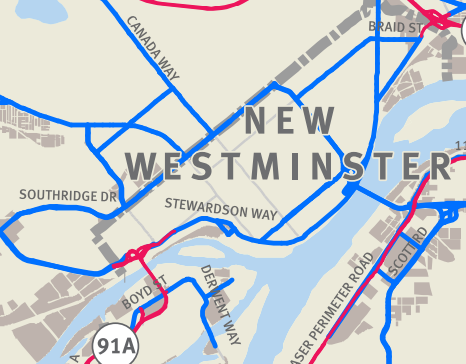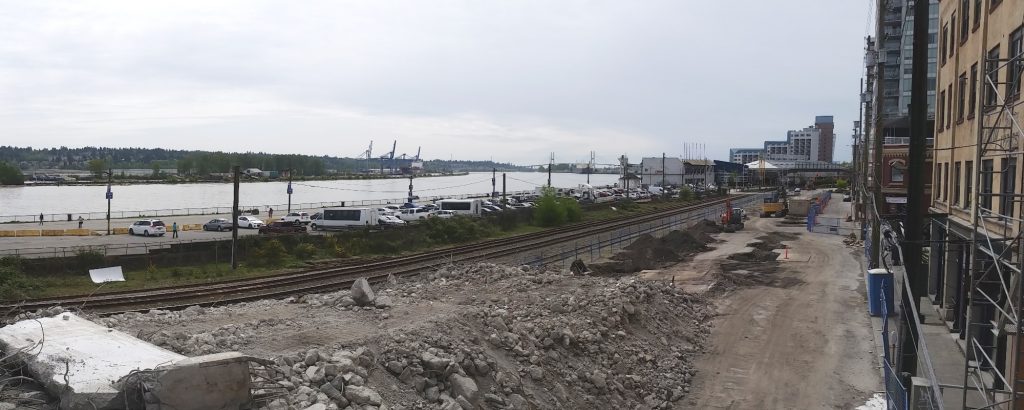Mark asks—
Hi Pat
A question regarding the recent council compensation recommendations, specifically the car allowance. Given the city and council’s vocal support for increased transit spending, reducing traffic in the city and it’s occasional touting of how great the city is in terms of transportation mode share, why would council (well, you at least since we’re on ask Pat) support a flat payment for automotive use?
Given their advocacy on the matter, council members should be leading by example on this. The city has excellent skytrain and decent bus service, and is well connected regionally. Why not give councilors transit passes to cover their travel?
Of course not all commitments can be met by transit, and yes councilors should be free to expense appropriate mileage (or taxis, rentals, car shares, etc) related to their duties. But simply giving councilors money for their automotive expenses runs counter to what the city and council is pushing for.
Appreciate your thoughts and the time to reply, and thanks for keeping up the blog.
Yep, I agree with you. The “car allowance” is a stupid idea for a City of 15 square kilometres, with the densest transit coverage and highest alternative mode share of any community outside of downtown Vancouver, and a Master Transportation Plan that takes priority away from the private automobile as the primary form of transportation. We have a Mayor who walks to work, one Councillor who never drives and a couple others (including me) who make it a point not to use a car to get around within town. A “car allowance” makes no sense.
Of course, it isn’t a “car allowance”, or even the HR-preferred vernacular “vehicle allowance”. It is a “transportation allowance”, as we can use it on any mode we like. We can top up a Compass Card, hire a taxi, gas up our car, get a Modo membership, or buy replacement tires for my bike.
Of course, it isn’t even a “transportation allowance”. It is $100 we get to spend on whatever we want. We are not required to provide receipts or justification, so this is little more than a taxable top-up of our salary. As a Councillor, I will get $1,200 more per year above the “base salary”, and whether that adequately compensates me for the transportation cost related to my job is kind of secondary (which makes it different than our other expense allowances, because they are actually backed up by policy guidance and we need to provide receipts and get them passed by HR, just like any expenses you might accrue in your regular job).
This issue arises from the once-every-term review of Council remuneration, which is always a sticky point. I don’t want to get into a long discussion about how much elected officials should get paid here, because that is pretty philosophical topic with wide differences of opinion, and wasn’t your question. However, it is apropos to discuss what a good governance model is to determine how much elected officials get paid. The decision we made this spring was, in my look at it, more about approving the process than the numbers.
When it comes to local government in BC, it is up to the Mayor/Councillors to determine their own pay. This is a direct conflict-of-interest that is not only permitted under the provincial law regulating local governments, but required by it! In that context, good governance requires that Mayor and Council don’t make a capricious decision and write their own cheques, but that they permit the professional staff in their HR and Finance departments to determine an appropriate process to determine appropriate compensation. The best we (and by “we”, I mean citizens and elected types) can hope for is that the process is transparent and defensible. Where both transparency and defensibility break down is when one or more elected official tries to supersede or run around that process, be it for personal or political reasons.
The process we have in New West is that every 4 years, HR staff compare the wages and benefits of elected officials in New West to those in comparable cities – a collection of other Lower Mainland municipalities, excepting the biggest (Vancouver, Surrey, Richmond) and the smallest (Bowen Island, Anmore, Belcarra) and do regression analysis on several statistics (population, budget, size of Council), with the guidance being to keep our Council firmly in the middle. Between those every-4-year adjustments, annual increases are indexed to CPI. You may suggest a better system, but HR has explained their rationale through reports, find it defensible and transparent. The process made sense to me, in that I could understand the rationale, could follow the numbers and do the math, and it made sense, so I supported it.
As for the “vehicle allowance”? I don’t like it, think it is a bad idea for all the reasons you state. However, respecting the process that provides good governance makes it hard to pick and choose the results of that process. HR and our external consultants determined what constitutes fair compensation based on a policy guideline that was, essentially: do what other similar Cities do. Apparently “car/travel/transportation allowance” is now part of that. We could have rolled it into the regular wage and compared across the municipalities and come up with a wage number that is $1,200 higher per year, but HR determined that making it a taxable expense makes more sense from an HR perspective.
I’m not sure raising a stink and pulling apart that process is the appropriate way to manage my discomfort about the symbolism of a “Car Allowance” in 2016 in New Westminster. How do I do it without calling into question the process – one that I have essentially been at arms-length from to reduce the conflict of interest created by the legislative structure – and not opening the door for a very political discussion with everyone making whatever adjustment suits their specific desires, political position, or special idea? I would argue of all the decisions we make as a Council, this is one where our personal politics need to be ignored, and the decision made (effectively) by staff.
So I don’t really have an answer to the “Car Allowance” question (at least not one I could come up with and propose in a reasonable timeline), but it is clear my personal political opinion is that it is a bad idea. This is something I am thinking about as I think our entire organization at City Hall needs to do a better job walking the walk when it comes to Transportation Demand Management. We are asking residents and businesses in the City to adapt to a more sustainable transportation system, but are slow to adopt progressive change as a corporate entity. Obviously, that argument is easier to make if us elected officials take a position of leadership. I’ve put this issue on my To Do list, and hope to have a better answer for you prior to the next time we go through this exercise.

